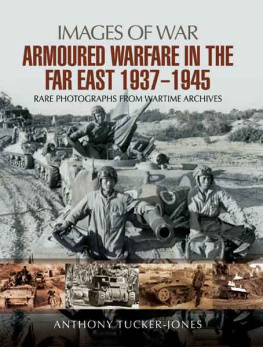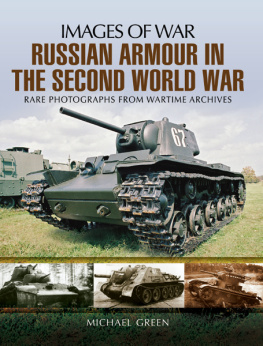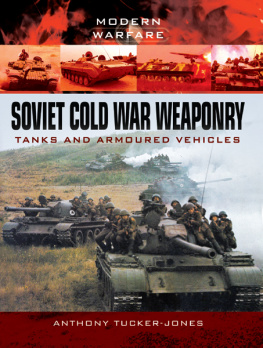Norman Clark - World War One Tanks, Trucks & Armoured Cars
Here you can read online Norman Clark - World War One Tanks, Trucks & Armoured Cars full text of the book (entire story) in english for free. Download pdf and epub, get meaning, cover and reviews about this ebook. year: 2014, genre: History. Description of the work, (preface) as well as reviews are available. Best literature library LitArk.com created for fans of good reading and offers a wide selection of genres:
Romance novel
Science fiction
Adventure
Detective
Science
History
Home and family
Prose
Art
Politics
Computer
Non-fiction
Religion
Business
Children
Humor
Choose a favorite category and find really read worthwhile books. Enjoy immersion in the world of imagination, feel the emotions of the characters or learn something new for yourself, make an fascinating discovery.

- Book:World War One Tanks, Trucks & Armoured Cars
- Author:
- Genre:
- Year:2014
- Rating:4 / 5
- Favourites:Add to favourites
- Your mark:
- 80
- 1
- 2
- 3
- 4
- 5
World War One Tanks, Trucks & Armoured Cars: summary, description and annotation
We offer to read an annotation, description, summary or preface (depends on what the author of the book "World War One Tanks, Trucks & Armoured Cars" wrote himself). If you haven't found the necessary information about the book — write in the comments, we will try to find it.
World War One Tanks, Trucks & Armoured Cars — read online for free the complete book (whole text) full work
Below is the text of the book, divided by pages. System saving the place of the last page read, allows you to conveniently read the book "World War One Tanks, Trucks & Armoured Cars" online for free, without having to search again every time where you left off. Put a bookmark, and you can go to the page where you finished reading at any time.
Font size:
Interval:
Bookmark:
NORMAN CLARK
A Collection of Posters, with texts and Illustrations by Norman Clark
2014 Norman Clark All Rights Reserved INTRODUCTIONThis book is patently about the socalled Great War, but does not talk about Strategy, Tactics or Battles other than in where these were specific to the specific development ofmotorised vehicles in the conflict.
Among the many firsts of the First World War, was the use of technology to an extent never thought of in earlier times. In fact War itself changed, never to be the same again, and never to be clothed in any form of glamour it previously enjoyed.
It was brutal, and massively destructive of both men and society, yet perversely it accelerated many things that otherwise would have taken many generations to achieve.Particularly in the field of medical care, and notably and appallingly in areas like plastic surgery and prosthetics.Many of these look grotesque in hindsight, but what wentbefore was more so.
In a weird paradox, men learned how to slaughter each other in far greater numbers, and then went about trying tosave those in danger of dying. If ever there was a case for the futility of War this was the illustration.
For the first time battles were not settled in a matter of hours, many went on for days and as in the case of Verdun, even months. So above all the War was about Logistics. The fighting man needed to be fed, clothed and equipped inorder to go about killing. Other books have been written about just how this logistical demand bankrupted even thebiggest countries such as Great Britain.
Only America was to show a profit. Curiously they were to make this far more from their Allies than from the defeatedGermany, who they promptly aided to recover far morequickly than the apparent victors.
As they would quite rightly say Business is Business.
Aircraft did find a relatively early acceptable role as an aid to reconnaisance, but bombers were not an early factor as they had very little payload capacity. This changed as theWar progressed.
Armoured Cars were nothing new and of course had a longhistory going back as far as the chariot of early times. Yet again it should be remembered that the automobile itself was also a very young invention, although a vibrant one. It remains astonishing that so many reliable vehicles carryingweight of armour unheard of in their development, shouldhave been created and worked so well.
It can be seen that the seeds of Armoured Personnel Carriers stem from this time, although initially their role was again Reconnaissance and the protection and comfort (of course) of higher ranks.
Finally this book shows the real workhorses of the Logistical process Trucks (in American parlance), Lorries (in English) and Camions (in French). With Trains being restricted to existing lines, it was the Truck that mainly carried to the front lines all the food, the medicines, ammunition, and the thousandand one things needed to perpetuate the War.
It is one area of the war that one can regret in not beingdeveloped even earlier which would have saved the lives of thousands of horses, mules and other animals sacrificed tothe insanity of man.
Yet to a large extent it was, countries like Britain and Germany had long created a subvention or subsidy systemto manufacturers which meant produced vehicles could be brought back for military use, even where sold on.
The pre-paid subsidy created the priority. It also reveals thatthe Great War was not something unplanned. That Germansubvention trucks were built to fit narrow French roads and not wide German ones is a clear indicator of the fact.Elsewhere I have investigated the development of Propaganda, and WW1 was pivotal in being the first opportunity to create and formalise this often dark art. It was also the opportunity to try things out which sounds dreadful, but was inevitable as everything was unknown in this War toEnd Wars
Nobody really knew anything, about anything, and it was the saddest factor of all that so few of those leading the battles even learned anything in the process. Above allthese ignorance levels were through the complete lack of understanding of the psychological aspects of the combats.
Few if any of the Generals and General Staffs came near tothe actual fighting so had no comprehension of the conditions under which men were being exposed, killed and crippled.
One or two examples can be used to illustrate the detached mindset of the military leaders. They did not recognise what we now know as shellshock. They interpreted this as Cowardice. They did not approve of parachutesbeing issued to the pilots of the frail aircraft involved in aerial conflict as this was open to Cowardice once again. Not only was this latter attitude stupid in the extreme, it was to lead, not surprisingly to a lack of pilots in a very short space of time.
Hardly great military thinking?The major developments of the war were the arrival of the Machine Gun, Tank, and Aircraft, but it has to be saidthat largely this is from a standpoint of hindsight.
Although the tank was a British invention, like so many before in this category it was left to others to realise the true value of the primitive early models, and for Germanynotably to take develop in the intervening war years, whilst it lay dormant in the country where it wasinvented.
Having said all that why produce a book that neither claimsto be comprehensive nor technical? It is a fair question andone that is hard to answer.
I am a visual person, and it has fascinated me to see how many different forms were developed from a single necessity. It also revealed that with one exception in the Americandevelopment of Liberty Trucks, how little thought was given to interchangeable parts and standardisation in all spheres of motorised activity in the War.
It has also intrigued me as to how quickly motorised warfare was developed, as the motor industry itself was still just a young one.
As I say without any claims to being a complete collection I have taken a representative sample of motorised vehicles ofvarying sorts, and tried to show these as the fighting man would have seen them - dirty and scarred, just as they werethemselves. Details are few but the illustrations are accurateas far as they go. I have added basic information on each, but again this is not a technical tome in any sense.
I like to think of it as a visual reference point to a completelyunnecessary war, but one that did stretch the often perverse ingenuity of man to extremes in all areas.
Indulging myself a little I have also included some posters and advertisements of the era, as these form part of my own background as a designer and writer of similar items myself. I hasten to add -but not war.
I hope the end result proves as interesting to the reader as ithas to me in producing it.Norman ClarkFrance 2014


Three names consistently appear in the early daysof the Tank, Tritton, Swinton and Holt, and theyare credited with both the introduction anddevelopment of the first true one. Yet in 1912 an Australian engineer with the wonderful name of Lancelot de Mole had submitted plans for an armoured tracked vehicle but had been ignored.Swinton was a serving officer and suggested something similar but based on the Holtcaterpillar track system, which ultimately becamethe standard worldwide.
Font size:
Interval:
Bookmark:
Similar books «World War One Tanks, Trucks & Armoured Cars»
Look at similar books to World War One Tanks, Trucks & Armoured Cars. We have selected literature similar in name and meaning in the hope of providing readers with more options to find new, interesting, not yet read works.
Discussion, reviews of the book World War One Tanks, Trucks & Armoured Cars and just readers' own opinions. Leave your comments, write what you think about the work, its meaning or the main characters. Specify what exactly you liked and what you didn't like, and why you think so.








